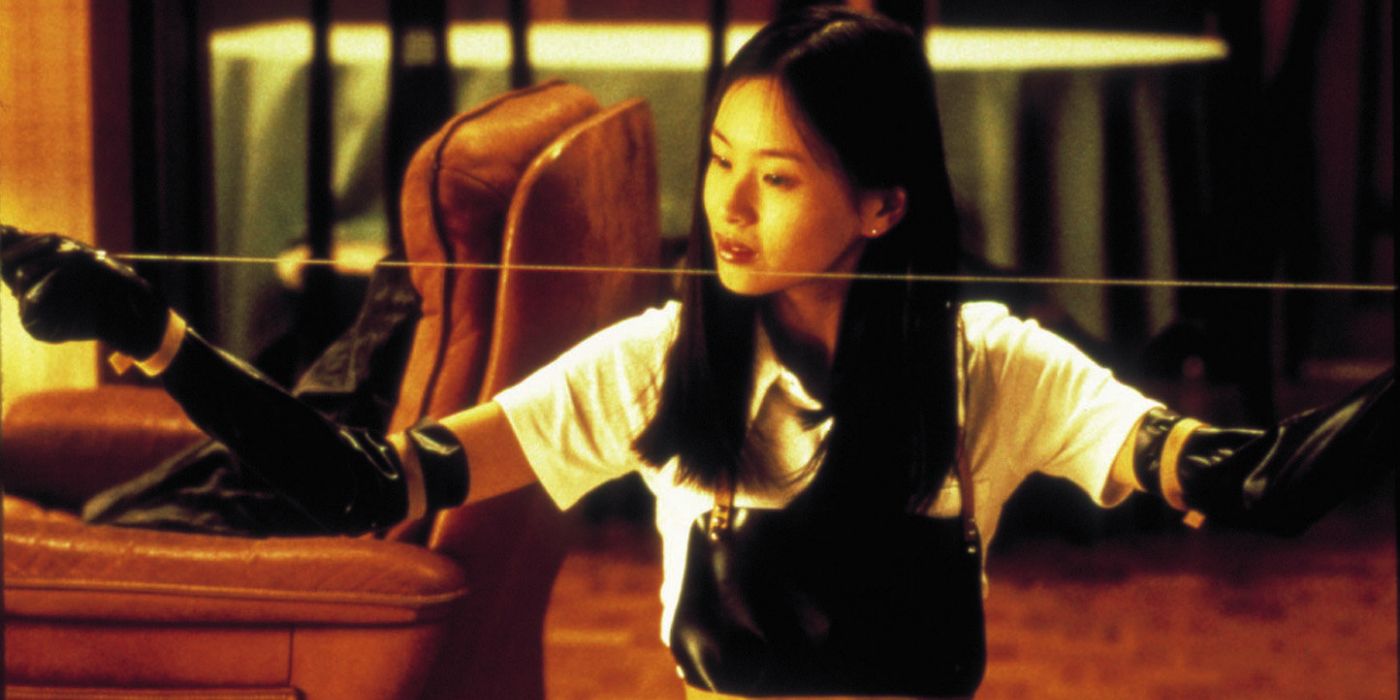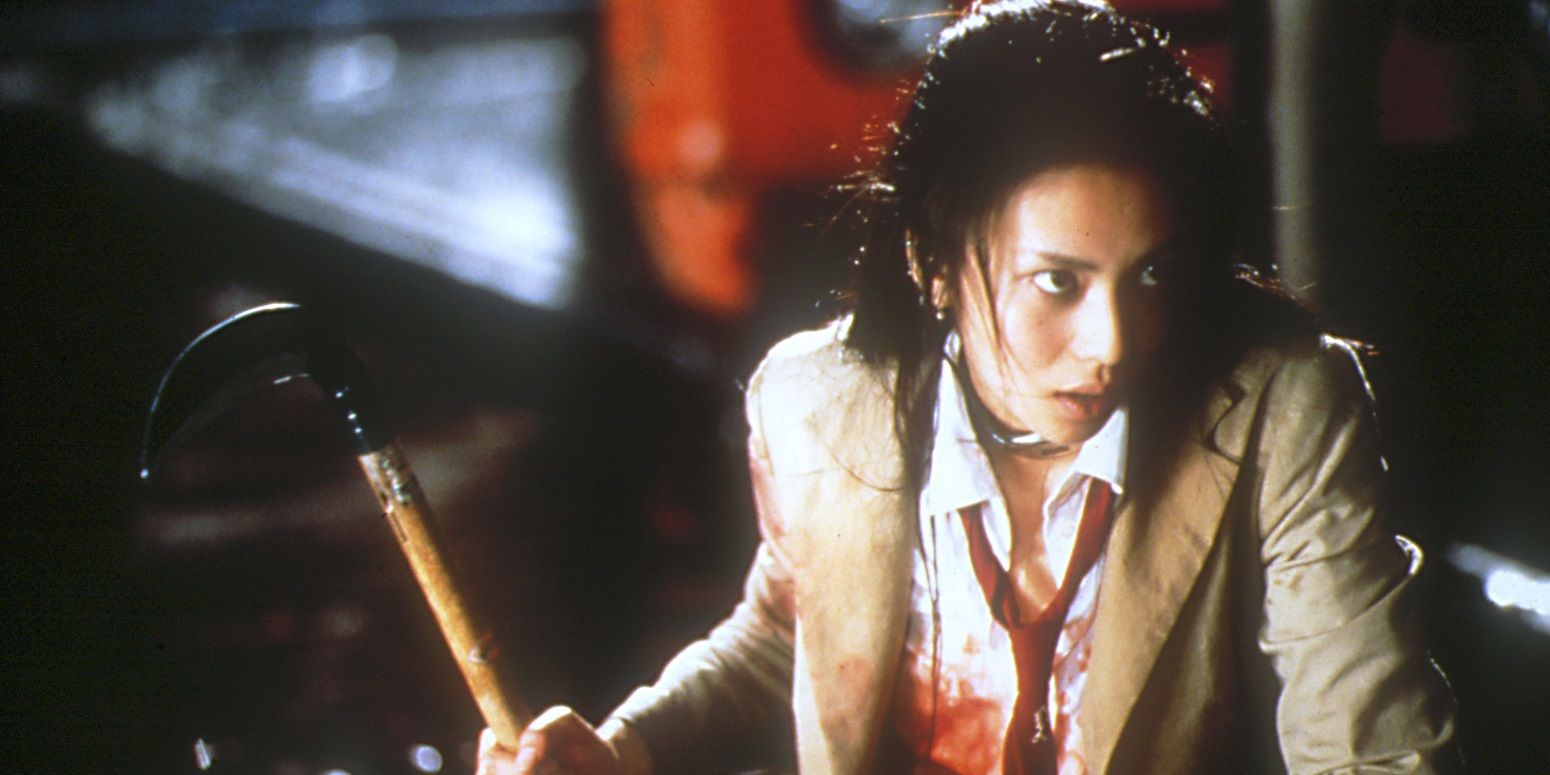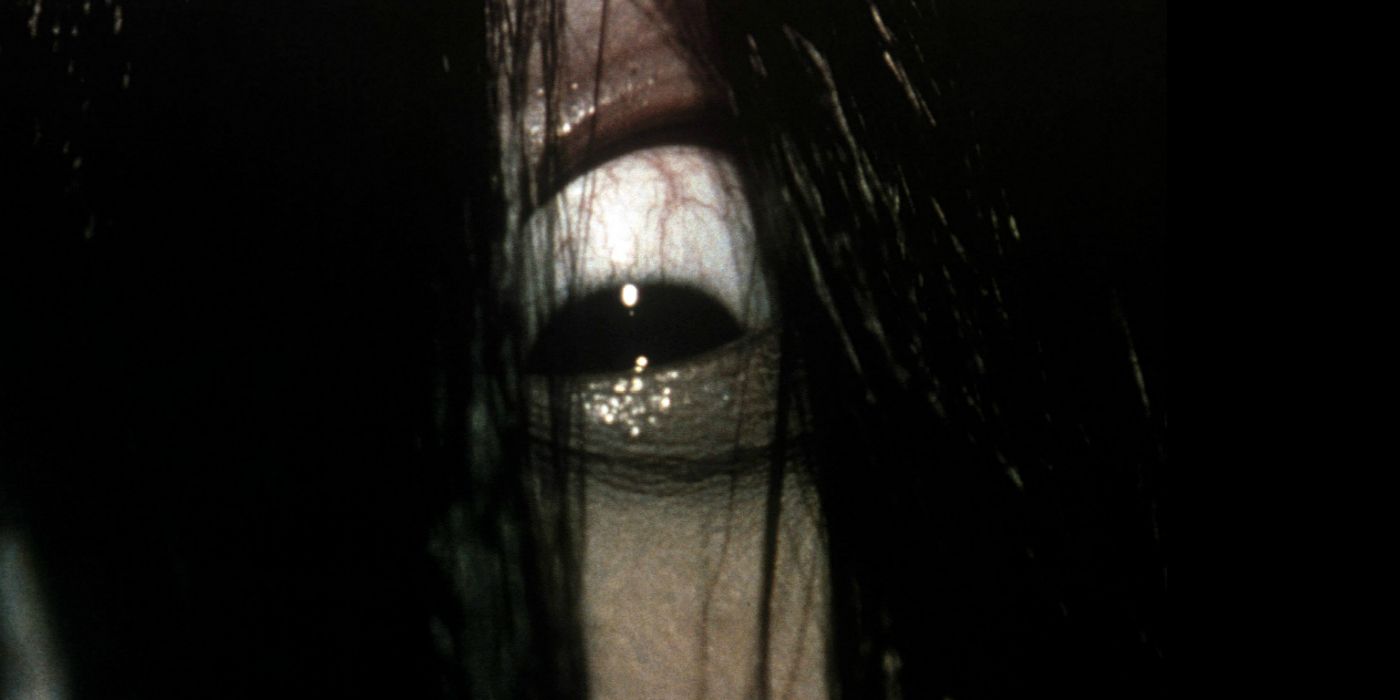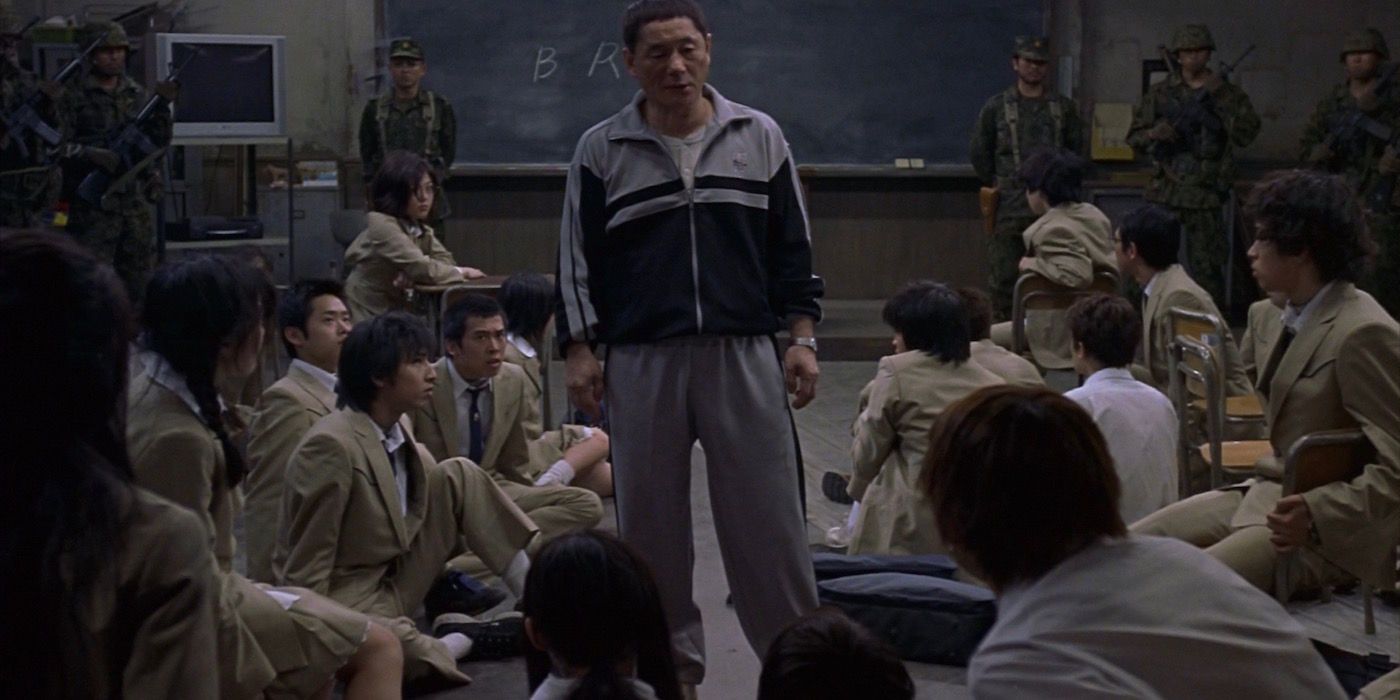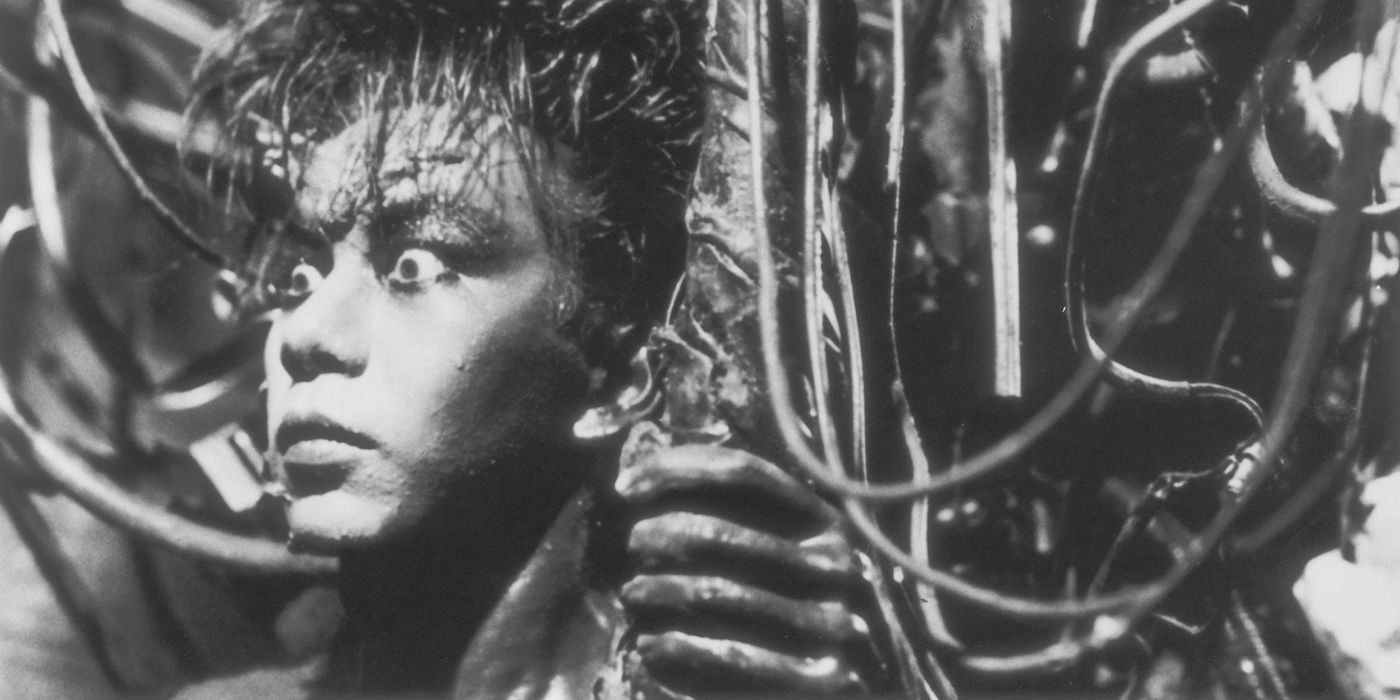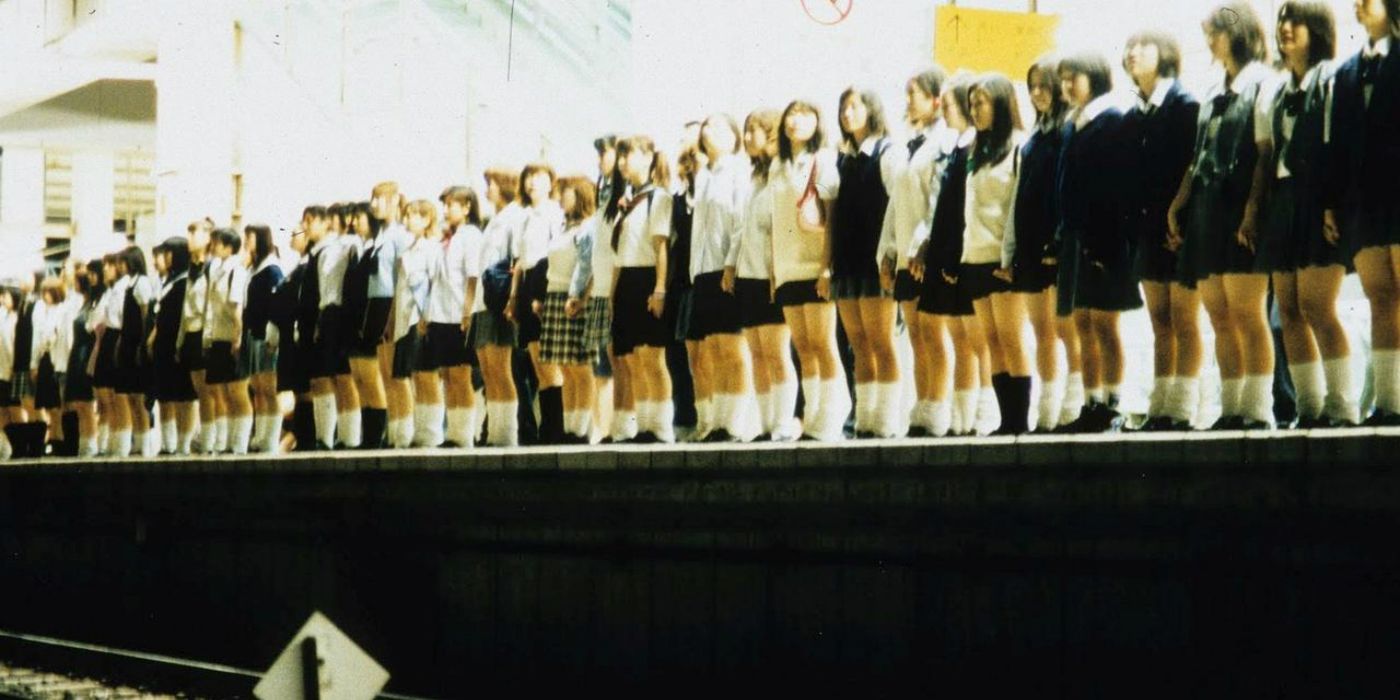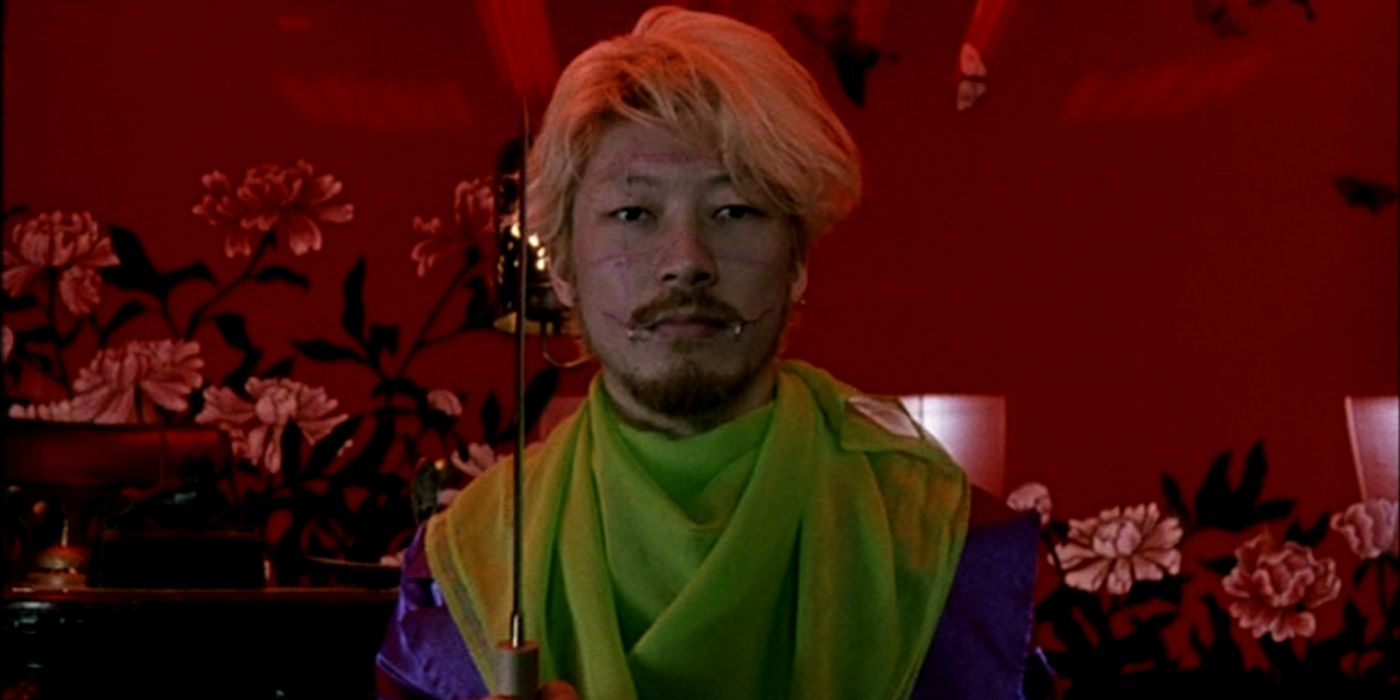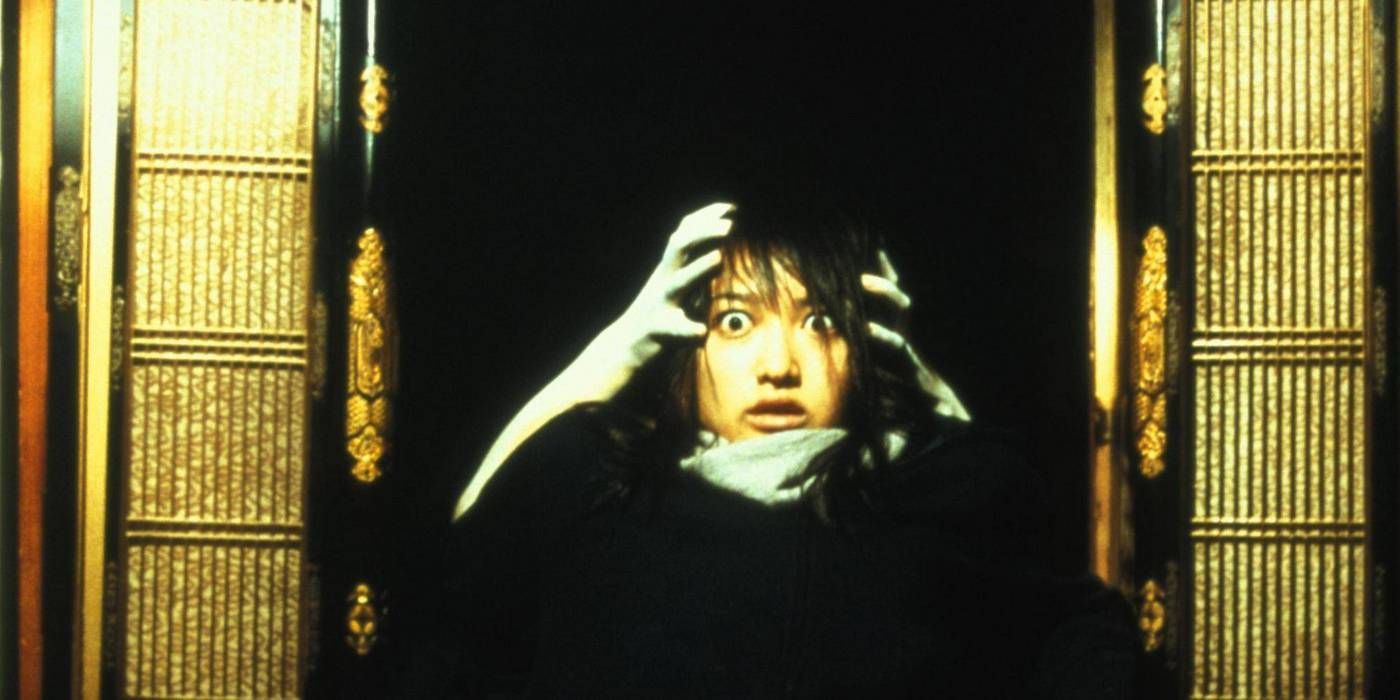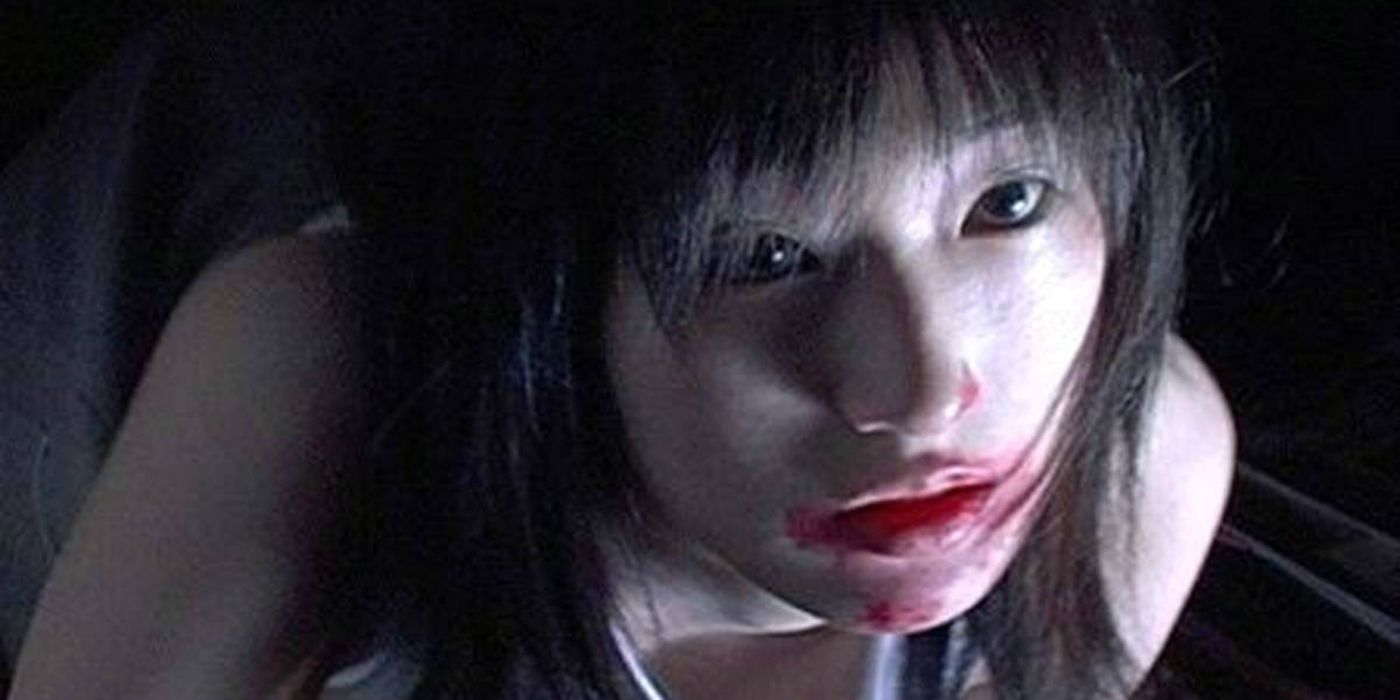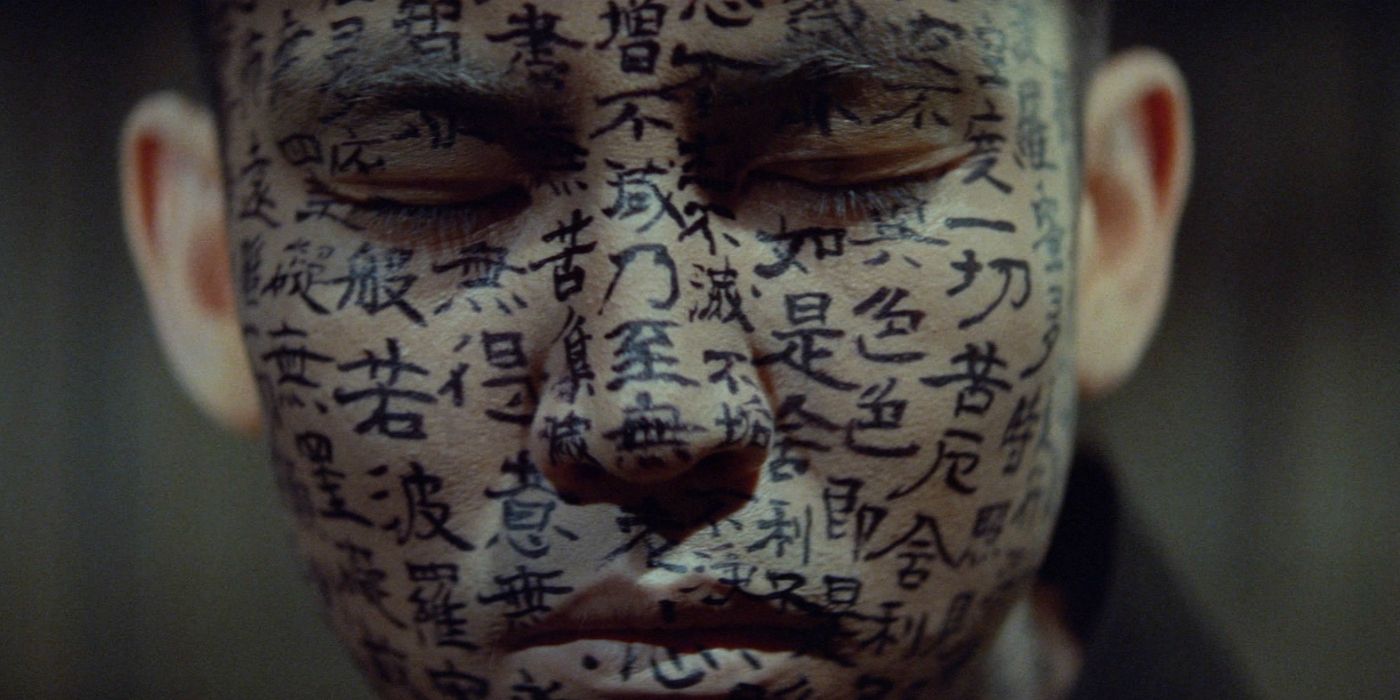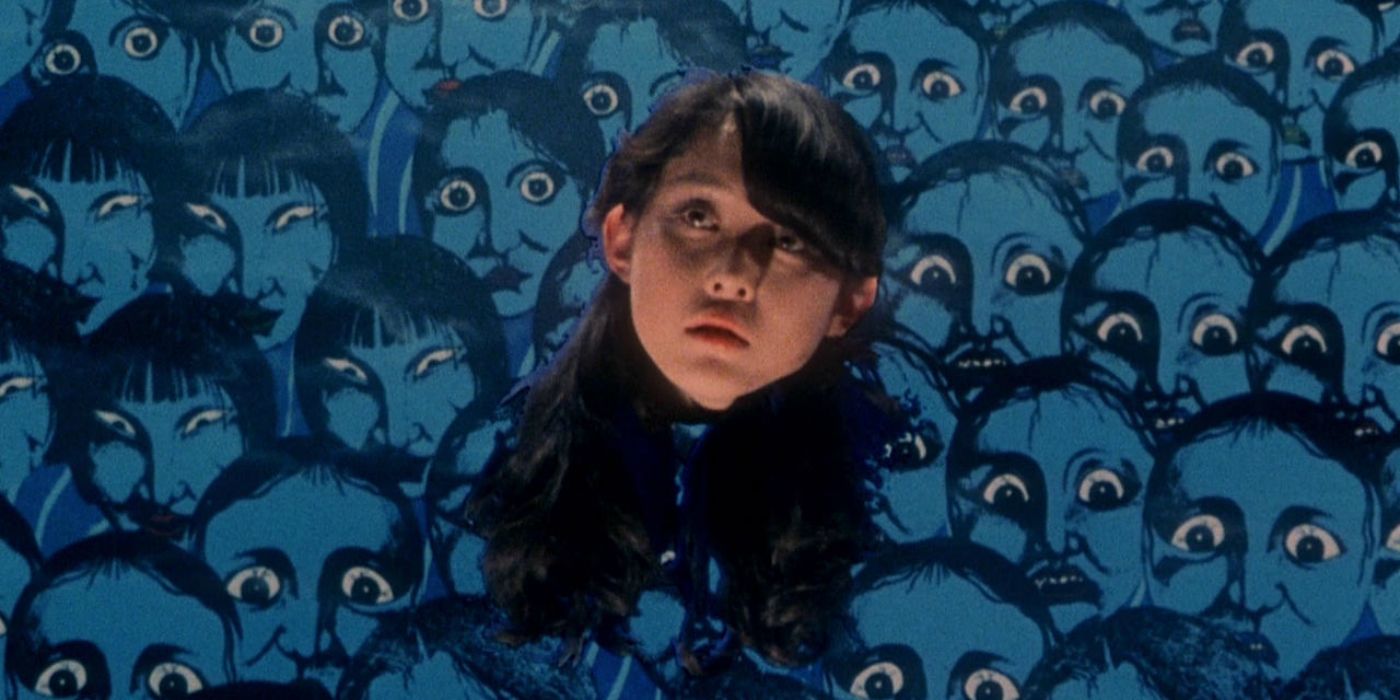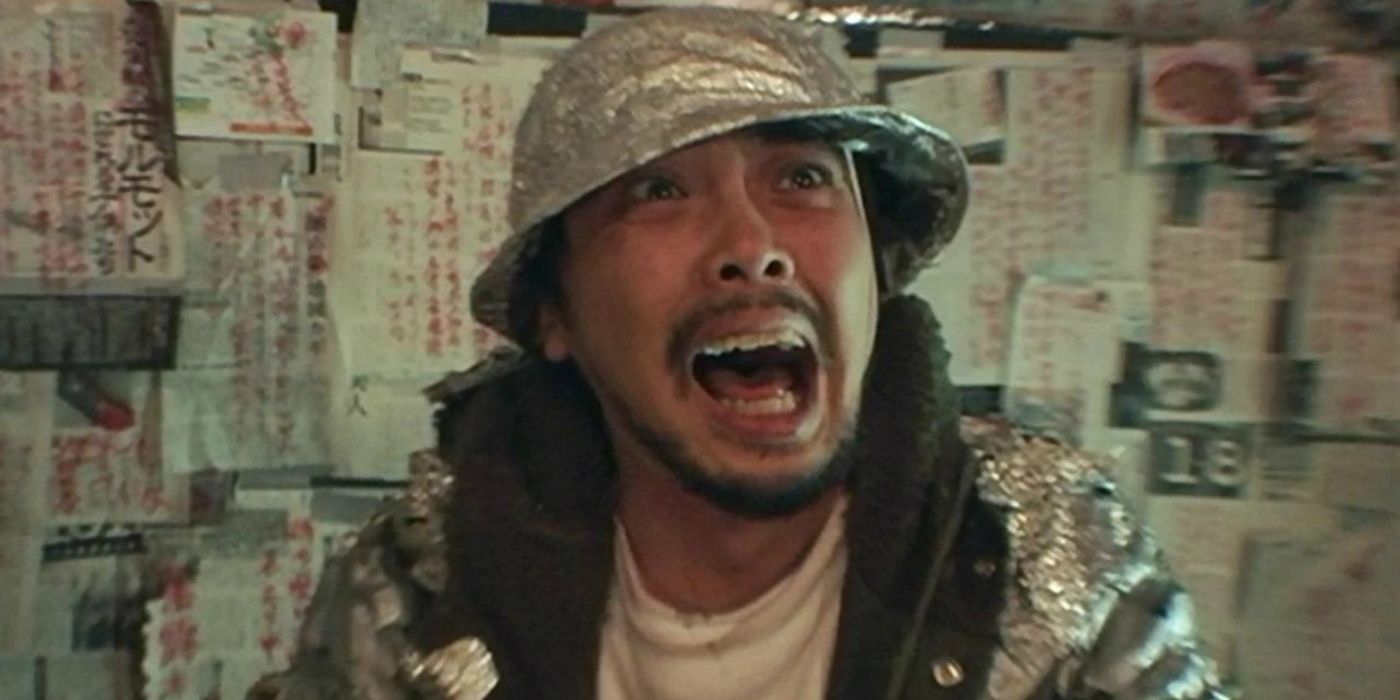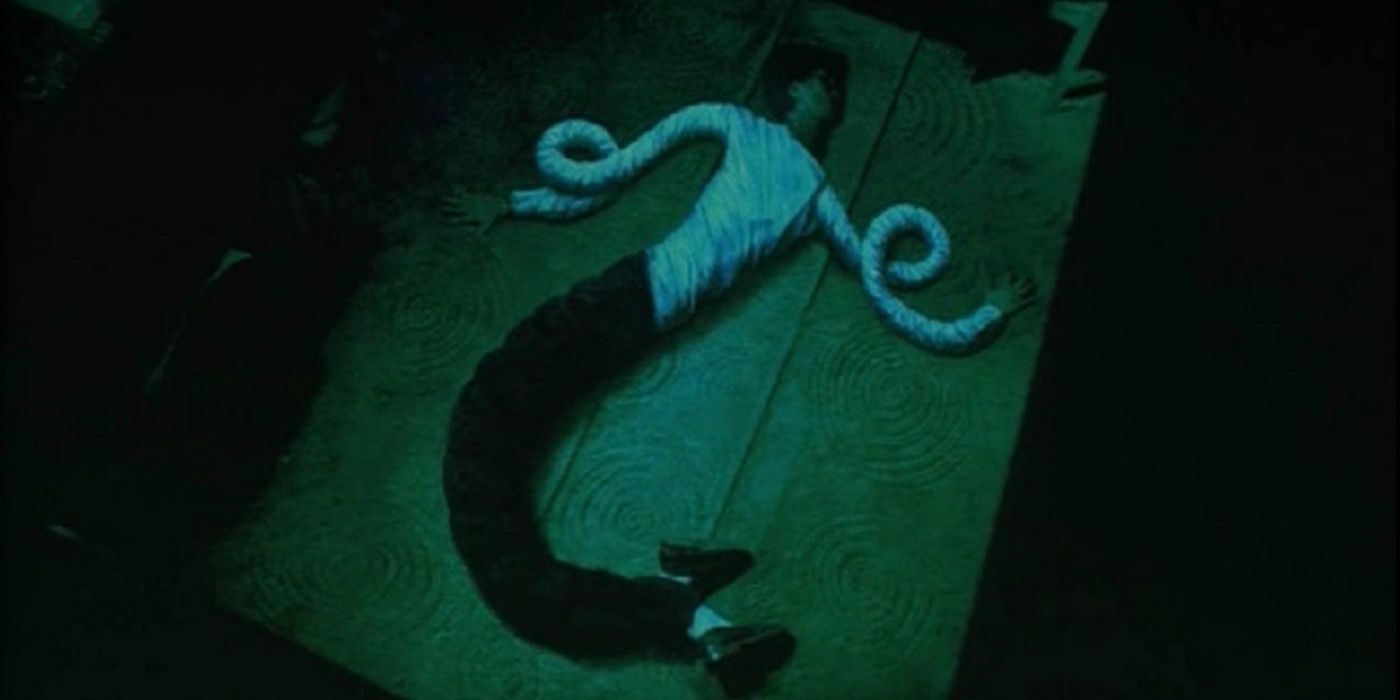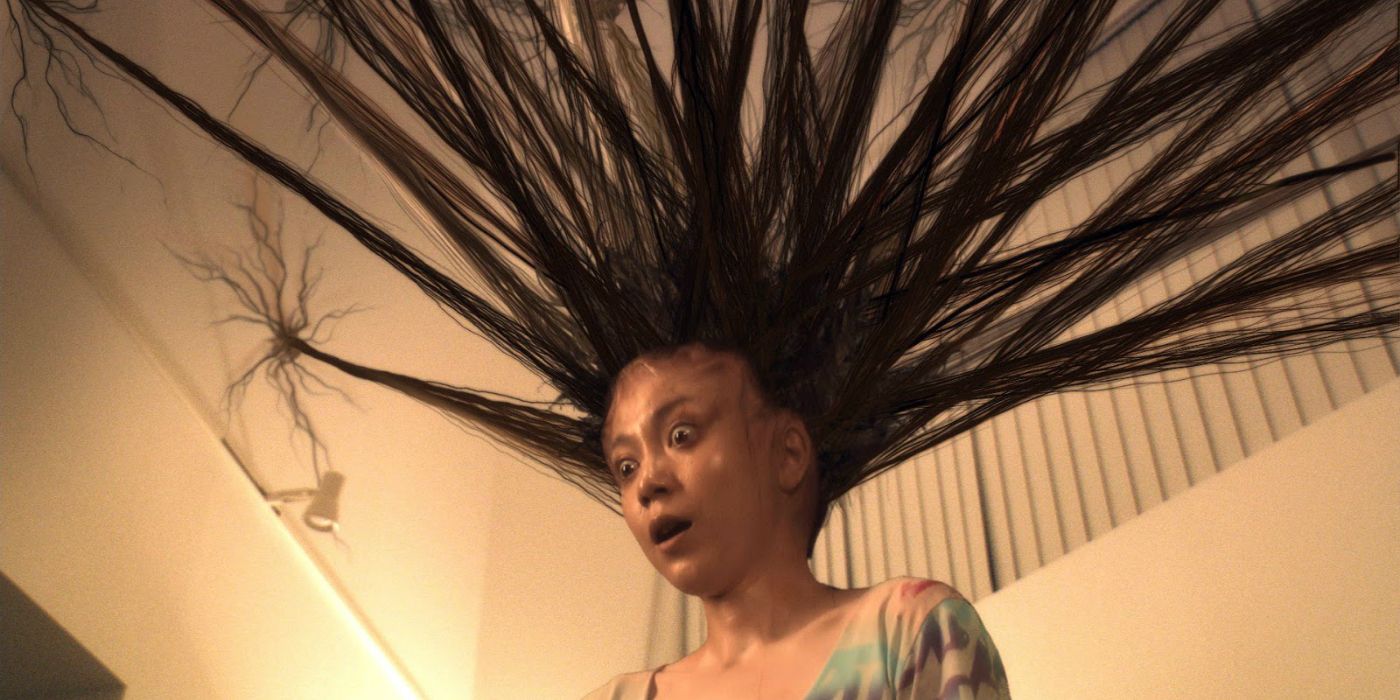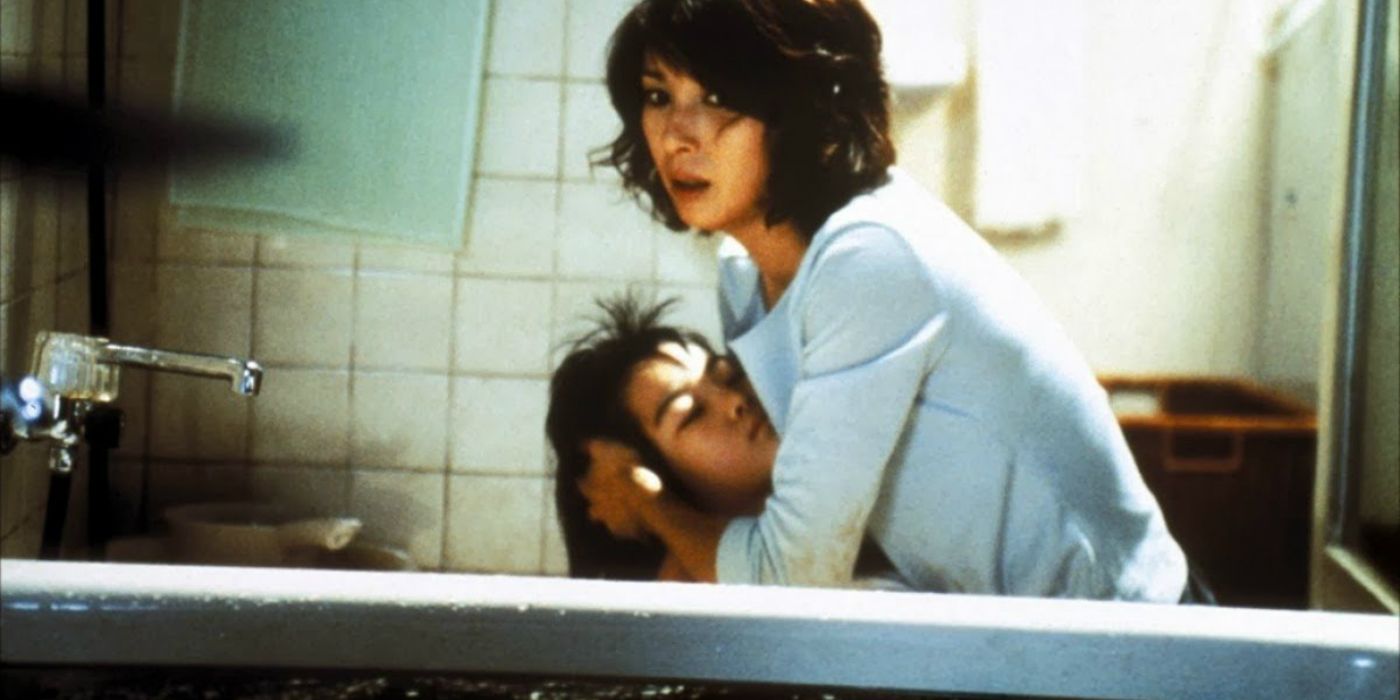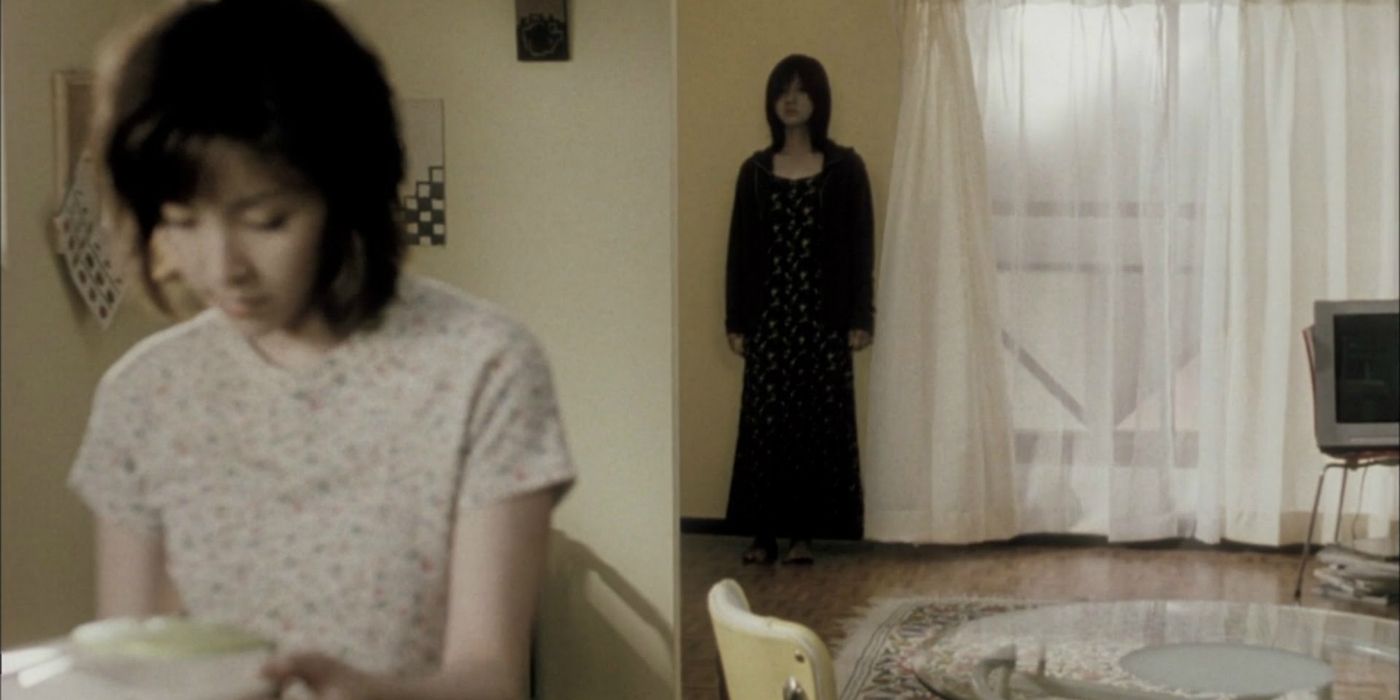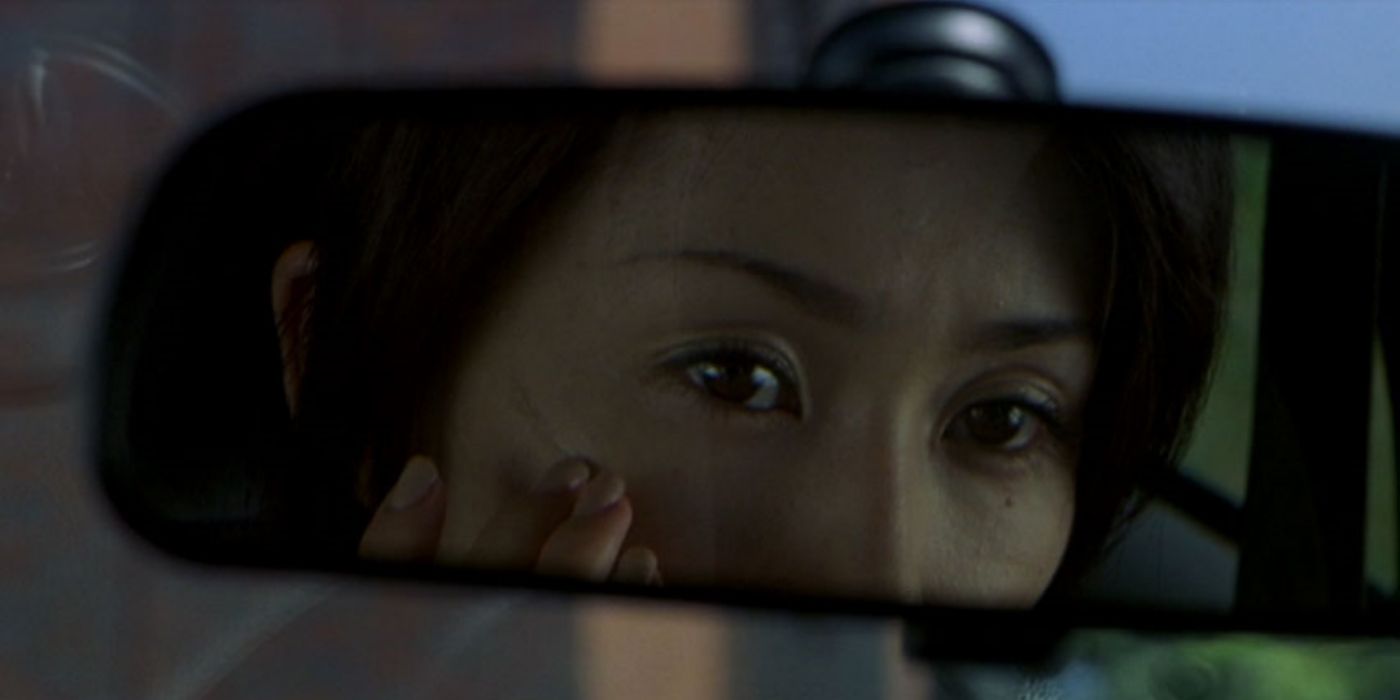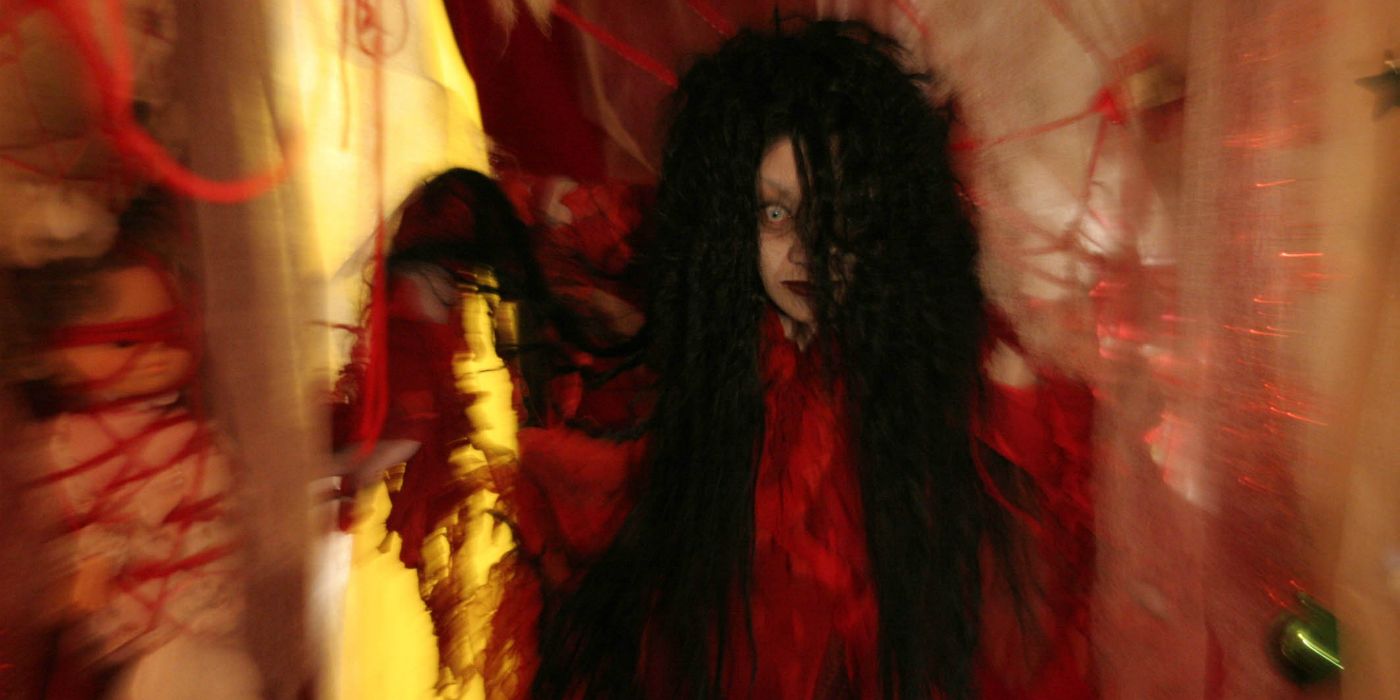Who doesn’t love a good horror movie or... even a really terrible one? The Japanese horror genre (known by the abbreviated term “J-Horror”) has given us films, television shows, comics, and other media that are some of the spookiest, campiest, and most mind-melting within the realm of horror.
Whether you’re looking for something that will give you literal nightmares or just an absurd blood-spraying campy good time, there’s an entry on this list for just about every horror fan. From classic black and white ghostly tales to modern takes on digital and cultural curses, Japanese horror filmmakers add an imaginative and creative flair to their films that can be hard to find in Western horror filmmaking. The 2000s saw the advent of the Western J-Horror remakes, like The Ring and The Grudge, but few were worthy of comparison to the original Japanese films. Nothing compares to an honest to goodness J-Horror movie.
Beware of some spoilers that lie ahead, there’s a few of them!
Read on to learn about the 17 Best Japanese Horror Movies of All Time.
16. Ringu
Ringu is a 1998 psychological horror film directed by Hideo Nakata. Most people knowthe long-haired, creepy curse-caster Sadako by her westernized name, Samara, from the 2002 English-language remake of the film. The remake deviated a little but from the original, but not much.
It follows the story of television reporter and single mother Reiko (Nanako Matsushima) who becomes entangled in a seemingly inescapable curse that will be your demise about seven days after watching the curse's origin-- a VHS tape. Like the remake, the film opens up with two teen girls talking about a cursed videotape after one of them reveals that they've seen it, and the opening goes about as badly as you'd expect.
Ringu was a fascinating film because it used the creepy little girl trope in a way that made it unique. There’s something very terrifying about being cursed by the simple act of watching something, especially when you know how little time you have to break that curse. Anxiety attack, anyone?
15. Battle Royale
Battle Royale is a 2000 dystopian horror-action film directed by Kinji Fukasaku, based on the novel of the same name by Koushun Takami. In Battle Royale, junior high school students are forced by the Japanese government to compete in a Hunger Games-style death match between each other, with one victorious survivor to be allowed to leave. In fact, The Hunger Games is considered by many fans to be an obvious rip off of the original Battle Royale.
Battle Royale is one of the best films on this list for many reasons, including its iconic and dramatic film, the fantastic performance by the talented Takeshi Kitano, its multidimensional and diverse young characters, and its uncomfortable mix of bloodshed and humor. But most of all, Battle Royale is a great film because it makes you question yourself: "If I were in this situation, how strong would my morals and will to live be?"
14. Tetsuo: The Iron Man
Tetsuo: The Iron Man is one of those J-Horror films that sticks with you after watching it for the very first time. This 1989 cyberpunk horror film was directed by Shinya Tsukamoto and has become a low-budget horror cult classic.
There is very little dialogue, which adds to the film's allure. The film opens up gruesomely with a metal fetishist, surrounded by pipes and smoke, violently cutting open his leg and inserting a steel rod inside of him. Later, he sees maggots festering his leg, and he runs into the streets screaming. A Japanese businessman named only as "Man" (Tomorowo Taguchi) and his girlfriend "Woman" hit the man with their car and try to cover up the incident. The metal fetishist somehow is able to enact revenge on the man that tried to dump him by cursing him to metamorphose into a metallic machine monster.
This film is gruesome to say the least, with everything from graphic tearing flesh to electric drill boners. The film has earned its place as one of the most surreal, gruesome, and campy Japanese horror films around.
13. Suicide Circle
Suicide Circle (known as Suicide Club outside of Japan) is a 2001 indie horror film that was written and directed by Sion Sono. The film explores a pandemic of suicides that suddenly occur across Japan and the detective, named Kuroda (Ryo Ishibashi), who seeks to unravel the mystery behind them. The film has gained fame for its exceptionally gory presentation and very controversial themes.
The film opens up with a performance from a fictional idol pop group called Dessart and a mass 54-person suicide committed by teen schoolgirls who jump in front of an oncoming train. The scene is one of many gruesome scenes in the film, and one the most iconic in the Japanese horror genre.
Suicide Circle is a great film for its complex plot and symbolic themes. The film has been interpreted and reinterpreted by fans around the globe for years. It is likely that the film is a surreal exploration of how fads can influence the actions of people.
12. Ichi the Killer
Ichi the Killer is a 2001 crime horror film directed by Takashi Miike and based on the manga series by Hideo Yamamoto. The film tells the story of opposing yakuza gangs and a murderous scarred man named Ichi, who is used as a killing dog between the gangs.
The film can be difficult to watch, with its graphic scenes of cruelty and intense violence, but Ichi the Killer has become a cult classic in Japanese horror and one of the most recognizable entries on this list. Despite its graphic nature, the film is far from vapid and pointless. The themes of the film are what give it its charm-- more or less, Ichi the Killer is a very well-done and artistic assessment of violence, responsibility, and the media.
The film takes a critical stance on how violent imagery is consumed in modern times without making the filmmakers' own moral stances known. Its makes the viewer question their own attitude toward voyeurism and violence, and its a shame that the film's release was met with aggressive attempts to censor it. By censoring it, the point of the film is lost.
11. Ju-On: The Grudge
The 2002 supernatural horror film Ju-on: The Grudge was directed by Takashi Shimizu. The film was actually the third installment of the Ju-on series but was the first to be theatrically released. Like Ringu, Ju-on: The Grudge had an American remake called The Grudge in 2004, but the Westernized version was also directed by Takashi Shimizu. Luckily, the remake maintained Shimizu's taste in directing and was a major success.
In Ju-On: The Grudge, a grisly murder left its mark on a house in Tokyo long after the deadly events took place. When a new family moves in, they find themselves emotionally influenced and possessed by the strong emotions and spirits left behind in the home.
Ju-On: The Grudge earns a spot in this list for its well-done elements of storytelling and unique ghost story. The scene where Kayako's ghost crawls in a bone-cracking manner down the stairs while emitting a terrifying death rattle has become an iconic image in Japanese horror. The thought of inadvertently touching a cursed space whose darkness will follow you even if you leave is definitely terrifying.
10. Marebito
Marebito is a 2004 horror film directed by Takashi Shimizu. The film follows a voyeuristic man named Masuoka (Shinya Tsukamoto) who becomes obsessed with videotaping fear after he sees a terrified man commit suicide by stabbing himself in the eye. Eventually, he discovers what appears to be an alternate dimension beneath Tokyo. He finds a naked woman chained to a cave there, and takes her back to his apartment. She cannot eat, drink, or speak, but one thing is for certain-- whatever she is, she wants blood.
The film is fascinating not only for its horror elements, but for its fantasy elements as well. The earliest scene of Masuoka crossing into a mountain range in an alternate dimension through the hidden underground tunnels beneath the Tokyo subway lines is something rarely seen in other horror films. The film has a mysterious ethos reminiscent of something from H.P. Lovecraft. Many attempts to explain the film include speculation that Masuoka is actually insane, that the characters and worlds he encounters actually just represent human ideas, or that F is actually his daughter. Marebito doesn't offer an explanation.
9. Kwaidan
Kwaidan is a 1964 anthology horror film by director Masaki Kobayashi. The film is an anthology of stories based on Lafcadio Hearn's collection of folktales from Japan.
"The Black Hair" follows a samurai who divorces his wife to marry a richer woman. His new wife is cold and distant, so the samurai finds himself missing his old wife. His new woman discovers this truth, the two fight, and the samurai decides to return to his original love. Upon returning to his old home, he finds dust, disrepair, and a terrifying truth.
"The Woman of the Snow" is a classic take on yuki-onna folklore, in which a woodcutter encounters a snowy ghost with sinister intentions.
"Hoichi the Earless" tells the story of a blind musician who sings tales of war and battle. He eventually discovers that the royal family who calls him to sing for them are far from normal.
"In a Cup of Tea" is a more meta story about a writer as he narrates his current project, in which a man keeps seeing a stranger's face in his teacup.
Kwaidan is a good old-fashioned classic that entertainingly depicts some spooky Japanese folk tales.
8. Hausu
The 1977 horror film Hausu is another older classic directed by Nobuhiko Obayashi. The film is considered a cult classic, with its most notable feature being its cast of amateur actors. The film follows a young girl who visits her ill aunt's country home with six of her classmates and subsequently encounters ghostly supernatural events. Each character has a unique name that describes them, including Gorgeous, Melody, Prof, Kung Fu, Mac, Sweet, and Fantasy. One by one, girls are being "taken" by the house. The film features a ghostly, antagonizing cat and a strange story with little explanation.
Hausu has pretty poor special effects, which Obayashi claimed were intentionally campy. Hausu is almost psychedelic in nature and quite an entertaining watch. Despite receiving few reviews upon its initially release-- and what reviews it did receive were pretty bad-- Hausu gained cult film status, with fans praising the film for not taking itself too seriously and having quite a stylized look.
7. Audition
Audition is a 1999 horror film directed by Takashi Miike and based on a novel by Ryu Murakami. The film follows widower Shigharu (Ryo Ishibashi), who finds himself lonely since the death of his wife. After his son suggests he find a new love, Shigharu agrees and stages a fake acting audition with the help of his friend in order to find a new wife. Upon meeting the beautiful and mysterious Asami, Shigharu is lovestruck, and Asami seems interested as well. However, it turns out it's not his love she's interested in.
Audition has some pretty good storytelling and a slow burning plot, but what makes this film worthy of this list is one scene in particular. Those who have seen the film are probably already cringing in discomfort. The scene is devastatingly gruesome. Critics have claimed that Audition as a whole is an authentically disturbing, but many were tempted to quit watching during the last thirty minutes of the film. Thinking about giving it a shot? Don't do so on a full stomach.
6. Noroi
The 2005 found footage horror film Noroi (literally "The Curse") is a mockumentary-style horror film that is far from the typical Western execution of this trope. The film was directed by Koji Shiraishi.
The film focuses on a paranormal investigator named Masafumi, who has become famous for his media work on the supernatural. While making his last documentary about a mysterious curse, Masafumi is reported missing and his house is burnt down with his wife's remains inside. What follows is the footage Masafumi left behind. It starts off with Musafumi investigating a disturbed woman named Junko's home, which is abandoned and full of dead pigeons. As the mystery is unravels, a malevolent supernatural entity is discovered to be causing a series of terrifying events that Masafumi gets wrapped up in.
Noroi is notable for its unusually long and intricate runtime, something not common in the Japanese horror genre. This departure from the norm and its interesting, spooky plot make Noroi worth watching.
5. Uzumaki
If you're a fan of horror manga artist Junji Ito, you're likely to be surprised that a film adaptation of any of his work could be made. A mix of gruesome body horror and surrealist artwork, Ito's masterpieces were probably difficult to bring to the world of cinema. Somehow, the 2000 horror film Uzumaki, directed by Akihiro Higuchi, captured one of his most famous manga stories very well and with Ito's signature flair.
Uzumaki is divided into four parts titled "A Premonition", "Erosion", "Visitation", and "Transmigration". The main plot follows a schoolgirl named Kirie who begins to notice something very strange happening to her town. Her boyfriend's father becomes obsessed with spiral shapes and crawls into a washing machine, effectively killing himself. People turn into snails and popular schoolgirls eventually grow gravity-defying swirled hair. Other increasingly terrifying events piles up, and Kirie and her boyfriend must solve the mystery to save their friends and family. However, the source of the spiral curse may not be so easily stopped.
4. Exte
Exte is a 2007 horror film directed and written by Sion Sono of Suicide Circle fame. The plot of the film follows a wannabe hairdresser who is stalked by a hair fetishist who sells hair extensions to salons. The hair comes from a pretty gruesome and mysterious source-- the dead body of a girl who doesn't seem to decompose and whose hair continues to grow and come alive. Those who wear extensions produced by this ghostly girl go insane or are killed.
The film's opening is especially gruesome-- customs agents discover a shipping container full of human hair with a young girl's bald dead body within the pile of follicles. The autopsy on the girl's body results in the revelation that the girl's internal organs have been completely harvested as a victim of black market human organ racketeering. Our creepy trichophile is a morgue watchman where the body is located, and we learn the origins of his sick prized possession.
While the film follows typical "wronged girl's grudge" tropes that are common in Japanese horror cinema, Exte is the perfect combination of creepy, dark, and vengeful.
3. Dark Water
Dark Water is a 2002 horror-drama from director Hideo Nakata. The film is based on a piece of work by Koji Suzuki. The film was remade for Western audiences in 2005. directed by Walter Salles and starring Jennifer Connelly.
In Dark Water, Yoshimi (Hitomi Kuroki) is in the middle of an ugly divorce and has to move into a dilapidated apartment with her daughter. A leak forms in the building's ceiling and gets worse every day. Despite complaining to the building's janitor, the leak isn't fixed. When Yoshimi goes to the apartment above hers to take care of the problem herself, she discovers the apartment is locked. From then on, strange things begin to happen. A red bag and stuffed bunny appear every day by her door, no matter how many times she gets rid of them. Hair starts to appear in her tap water and Yoshimi starts seeing a strange girl. When her daughter goes missing, things go from creepy to downright terrifying.
This J-Horror film that did fairly well in theaters, but remains very underrated to to this day.
2. Kairo
Kairo, known more commonly as Pulse, is a 2001 horror film by Kiyoshi Kurosawa. Kairo did well upon its release, received positive critical reviews, and has since gained cult status. There was even an American remake of the film in 2006 which spawned several sequels in the franchise. You'll never look at the internet the same again.
In Kairo, two storylines follow a central theme about malevolent spirits that are able to invade the world of the living through the Internet. Kudo (Kumiko Aso) is a plant shop assistant who notices her coworker has been missing for several days. When she checks up on him, she realizes that he is acting unnaturally. After he commits suicide in front of her, Kudo and her friends become convinced that a computer disk he left behind is what caused his mysterious and sudden death. In the parallel story, Ryosuke (Haruhiko Kato) becomes haunted by a strange website that he can't escape after signing up for a new service provider. When his friend begins to act strangely, similar to Kudo's coworker, he discovers the truth behind what's been coming through the computer screen.
1. Premonition
Premonition is a 2004 horror film directed by Tsuruta Norio. The film is based on a manga by Kiro Tsunoda, and the film received an American remake in 2007.
In Premonition, a teacher named Hideki (Hiroshi Mikami) and his wife Ayaka (Noriko Sakai) are driving home from vacation with their little daughter. When they stop to use a phone booth, Hideki discovers a piece of newsprint that shows his daughter being killed in a car crash mere moments in the future. When Ayaka leaves the vehicle to ask for Hideki's help in fixing their child's seatbelt, the car is pummelled by a truck, killing their daughter. The two eventually divorce due to the tragic event, but the story has just begun. Several years later, Ayaka discovers an archive of newspapers that foreshadowed future events.
Premonition isn't widely known, but is a surprisingly great horror movie that deserves some recognition. If you haven't seen it yet, check it out.
Honorable Mention - Unholy Women
The 2006 anthology film Unholy Women gets an honorable mention on this list despite its flaws and lack of popularity or infamy. While all three short films in this anthology are good-to-okay in their own rights, the opening short film Katakata alone would have made for a fantastically creepy feature length film.
In the Katakata storyline, directed by Keita Amemiya, a young woman named Kanako is returning home from a date with her divorced boyfriend. After an earring hits her in the head, Kanako looks up just in time to see some heavy mass fall from the sky and hit her. Upon waking, she realizes she is an some sort of alternate dimension with a creepy little girl, ghostly citizens, and an antagonizing monster known only in the credits as "The Woman in Red".
The Woman in Red is absolutely terrifying. The nightmarish atmosphere that follows her wherever she goes, her slowly warping and changing appearance, and her grotesque expressions make her a Japanese horror villain for the ages. If only this short story could be adapted into a full-length feature film. Nightmare fuel, indeed.

